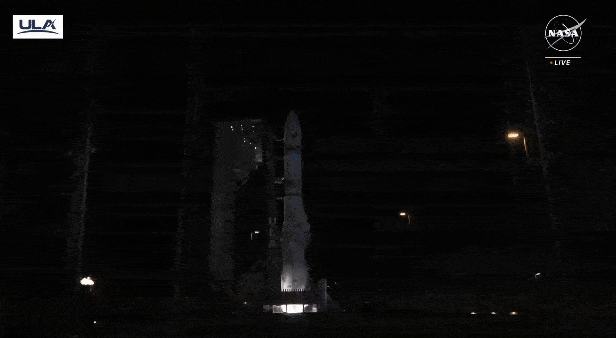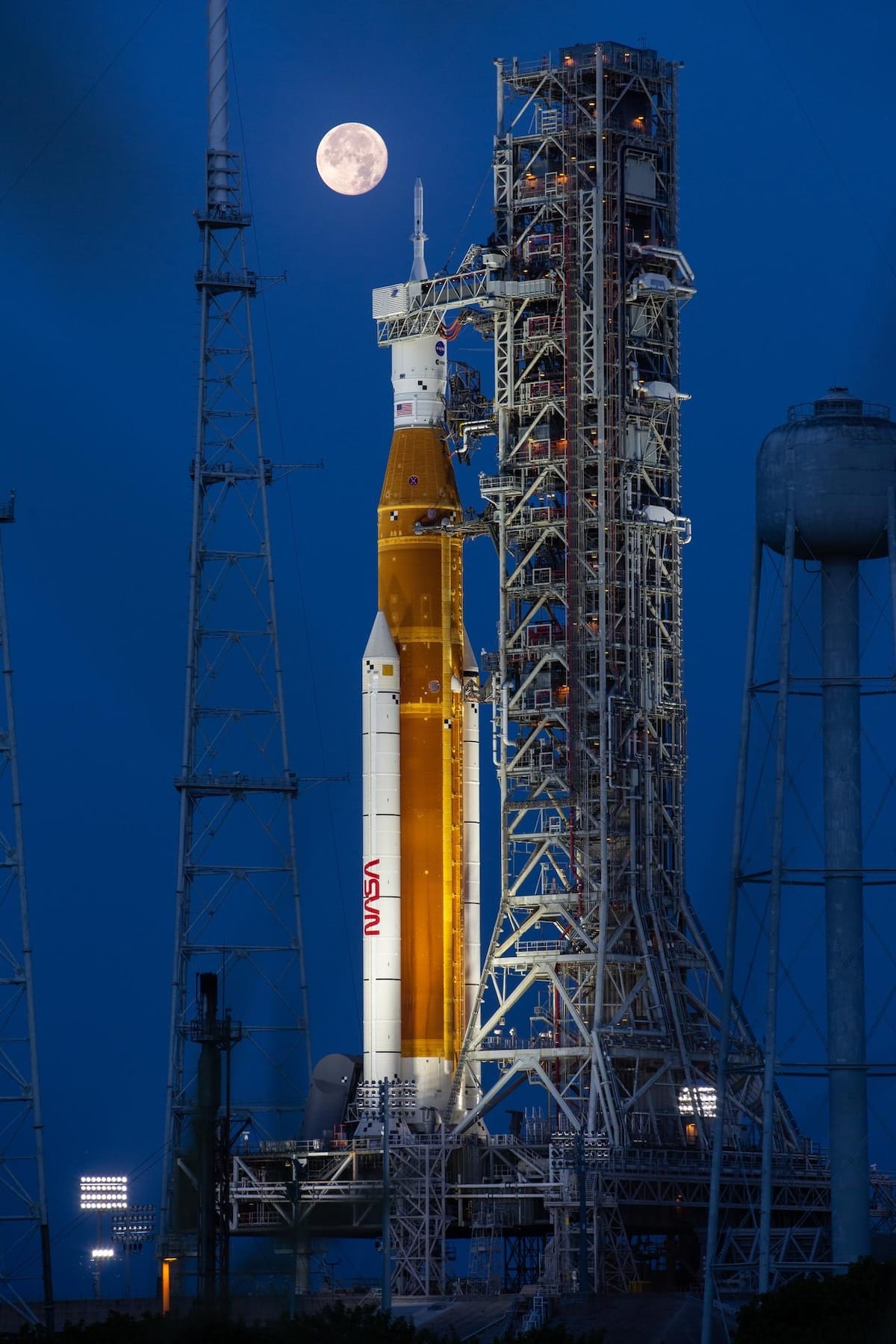
While most of us were sleeping last night, a radical shift in U.S. lunar exploration strategy lifted off.
What a great way to start the new year.
Specifically, at 2:18 AM Eastern Time this morning, Peregrine Mission One launched successfully from Cape Canaveral Space Force Station in Florida.

The mission is a mission to the moon.
The United Launch Alliance Vulcan rocket — seen above — lifted the Peregrine Lunar Lander to orbit. It is now on its way to a lunar landing in late February.
This is a name we quite like here at Brownridge. The bird seen in our company logo above the mountain ridges is indeed a peregrine falcon, the fastest animal in all of the animal kingdom.
Perched high on a ridge, the peregrine falcon always maintains perspective of the landscape below, waiting for the right moment to invest its speed and skill in capturing its next meal.
The Peregrine lander is carrying 20 different payloads from seven countries — 16 of which are commercial. They include some scientific instruments for NASA, as well, and all are all destined for the lunar surface.
The target destination is the Gruithuisen Domes region of the moon.
And yet, this isn’t technically a NASA mission. But a mission led entirely by a private space exploration company.
Peregrine Mission One is a commercial mission led by a small, private company out of Pittsburgh, PA called Astrobotic.
And it falls under a new partnership program referred to as NASA’s Commercial Lunar Payload Services (CLPS) initiative.
NASA’s CLPS was designed as a program that would support NASA’s Artemis missions, which have the overarching goal of returning NASA astronauts back to the moon for the first time in more than 50 years.
The Artemis program kicked off on November 16, 2022 with the launch of the Artemis I mission. The spacecraft traveled to the moon, entered lunar orbit, and successfully returned to Earth, splashing down just off the coast of California on December 11, 2022.

NASA’s CLPS will award contracts to private sector companies up to $2.6 billion through 2028. The goal is to diversify the number of companies delivering technology and launch services in support of NASA’s moon missions.
This is done through grants and commercial contracts to deliver NASA-related payloads to the moon.
For example, over the last six or seven years, Astrobotic has primarily been funded by the U.S. Department of Defense and NASA through grants. It also has commercial contracts that support its missions to the lunar surface.
Astrobotic basically sells space on lunar landers to a variety of customers, one of which is NASA.
$2.6 billion may seem like a lot of money to us, and it certainly is…
But the bigger picture is far more interesting. And costly.
In my very first issue of Outer Limits, I made the following statement about space exploration technology…
“The reason why space has been so inaccessible and only the domain of large governments has been the cost of developing aerospace technology and launching payloads into space.”
Consider that through 2022, NASA spent $23.8 billion developing the Space Launch System (SLS) and another $20.4 billion on the Orion spacecraft since the program began. Related ground infrastructure was another $5.7 billion. That’s almost $50 billion through 2022.
And the current forecasts for the Artemis program are for $93 billion to have been spent between 2012 and 2025.
It’s worth noting here that these funds are expected to support only four Artemis missions.
Even worse, each launch on NASA’s SLS will cost about $4.1 billion.
With the exception of the Orion spacecraft, the entire SLS rocket system is treated as expendable. There is no reusability.
The craziest thing is that NASA positions its $2.6 billion Commercial Lunar Payload Services (CLPS) initiative as a “more risky approach” compared to its programs managed in house.
This is not only ironic, it’s absurd considering the years of problems and failures of NASAs Space Launch System, not to mention the cost overruns and delays.
In reality, the CLPS program reduces the risk of NASA’s Artemis program.
Rather than depending so heavily on a hugely bloated, inefficient, bureaucratic organizational structure that consistently blows through budgets and misses deadlines, turning to the private space sector is a much smarter approach.
Private companies over the last decade have already proven to be far more innovative than the development under NASA’s directly managed programs. They aren’t weighed down by bureaucracy. And they aren’t anchored to “the way things are done around here.”
Private companies aren’t stuck to old technologies and processes. They can rethink, build with the most advanced technologies, and use modern project management processes to deliver on accelerated timelines.
The result? These private companies are able to deliver higher-quality technology and services for a fraction of the cost.
Let’s take SpaceX for example. It has become the most successful, reliable, and cost-effective way to launch any payload into space. It isn’t even close.
SpaceX has both reusability and operational and manufacturing scale — something that no other company has in the aerospace industry.
It also built the most successful satellite-based broadband communications network in history — Starlink — in just a few years. And Starlink is already generating free cash flow.
This comes as a painful embarrassment to every other major company that has tried to do this in the past.
To really understand how much more efficient private industry is compared to NASA-run programs, let’s compare NASA’s Space Launch System to SpaceX’s Starship.
Let’s be super generous as well to NASA and leave out all of the development costs. We’ll consider them sunk costs. We won’t factor them into the launch costs at all.
NASA’s SLS currently costs about $4.1 billion per launch capable of putting 209,000 pounds of payload into low Earth orbit (LEO).
As for SpaceX, I’m going to extrapolate and determine the ceiling for what SpaceX will charge for the Starship launch to LEO. SpaceX’s current Falcon Heavy costs $97 million per launch for 141,000 pounds to LEO. That’s about $687 per pound of payload.
SpaceX Starship can launch 331,000 pounds to LEO. If we use $687 per pound, that gets us to $227 million per launch. That is about 5% the cost of NASA’s SLS!!!
And if I had to speculate, the actual price to NASA for the earlier Starship launches will be around $150-170 million.
Better yet, Musk is on record having said the longer term target is to get launch costs down to around $10 million a launch.
The Starship’s third test launch is expected to happen sometime this quarter. In fact, that Starship is already out on the launch pad undergoing tests. I’d be very surprised if it didn’t happen within the next two months.
I’m expecting that this time, the Starship will make it to orbit…
Which begs the question, why would NASA throw away $4.1 billion with every SLS launch, when it could achieve the same goals for $227 million or significantly less?
Sadly the answer is government largess and major political favors to drive spending in congressional districts. It’s the kind of thing that makes me want to throw up.
Just imagine what the U.S. could do with the savings… which would almost be $4 billion per launch.
How about eliminating poverty? Or how about building nuclear fusion for limitless clean energy production?
The list is nearly endless with far better ideas.
I want NASA and the Artemis program to be a great success…
And I also want it to be done with the very best technology and in the most cost effective way. And that means involving SpaceX, Astrobotic, and the kinds of companies that are currently working with NASA as part of the CLPS initiative.
Either way, it’s going to be a very exciting year for lunar missions.
Next up is a launch in February with another small private company — Intuitive Machines (LUNR). This is the IM-1 mission which is sending a lunar lander to the Malapert A crater near the lunar south pole.
And later in the year, Intuitive Machines will launch a second spacecraft with its PRIME-1 drill capable of drilling into the lunar surface.
Also around the November timeframe will be another Astrobotic mission — the Griffin Mission — which will launch another NASA CLPS program called the Volatiles Investigating Polar Exploration Rover (VIPER).
It’s a mouthful, I know, VIPER is much better. In short, it will search the lunar south pole region for water.
And if the year really goes well, four NASA astronauts will travel to the moon and enter a lunar orbit as part of the Artemis II mission, scheduled for no earlier than November this year.
Let’s cheer for these incredible private companies that are literally building technology at the outer limits of what’s possible. And they’re doing it in a cost effective way.
I’m absolutely certain that they are the answer to enabling the U.S. government ambitions to establishing a human presence on the moon.
They are also the answer to opening up an incredibly vibrant space economy.
The reality is that the U.S. government and its various departments cannot ignore the advantages of 95% costs savings and accelerated timelines.
The space race is back on.
Time matters. This has become a critically important geopolitical issue.
And these dramatic reductions in cost, which have stimulated the creation of so many new aerospace companies, have put spaceflight and lunar missions into the price range of smaller governments and private corporations.
In short: The doors are now wide open. Space is no longer the just the realm of big government.
With an industry growing so quickly and with some much potential, new aerospace companies are now springing up every year. And there is no shortage of funding, either, from venture capital firms for great teams in this industry.
Which will also mean that these companies will eventually go public, creating incredible investment opportunities.
What do you think of this issue of Outer Limits? As always, we welcome your feedback and questions, and look forward to them. We read each and every email and address common questions in the Friday AMA issues. Please write to us by clicking here.